Board Game Review
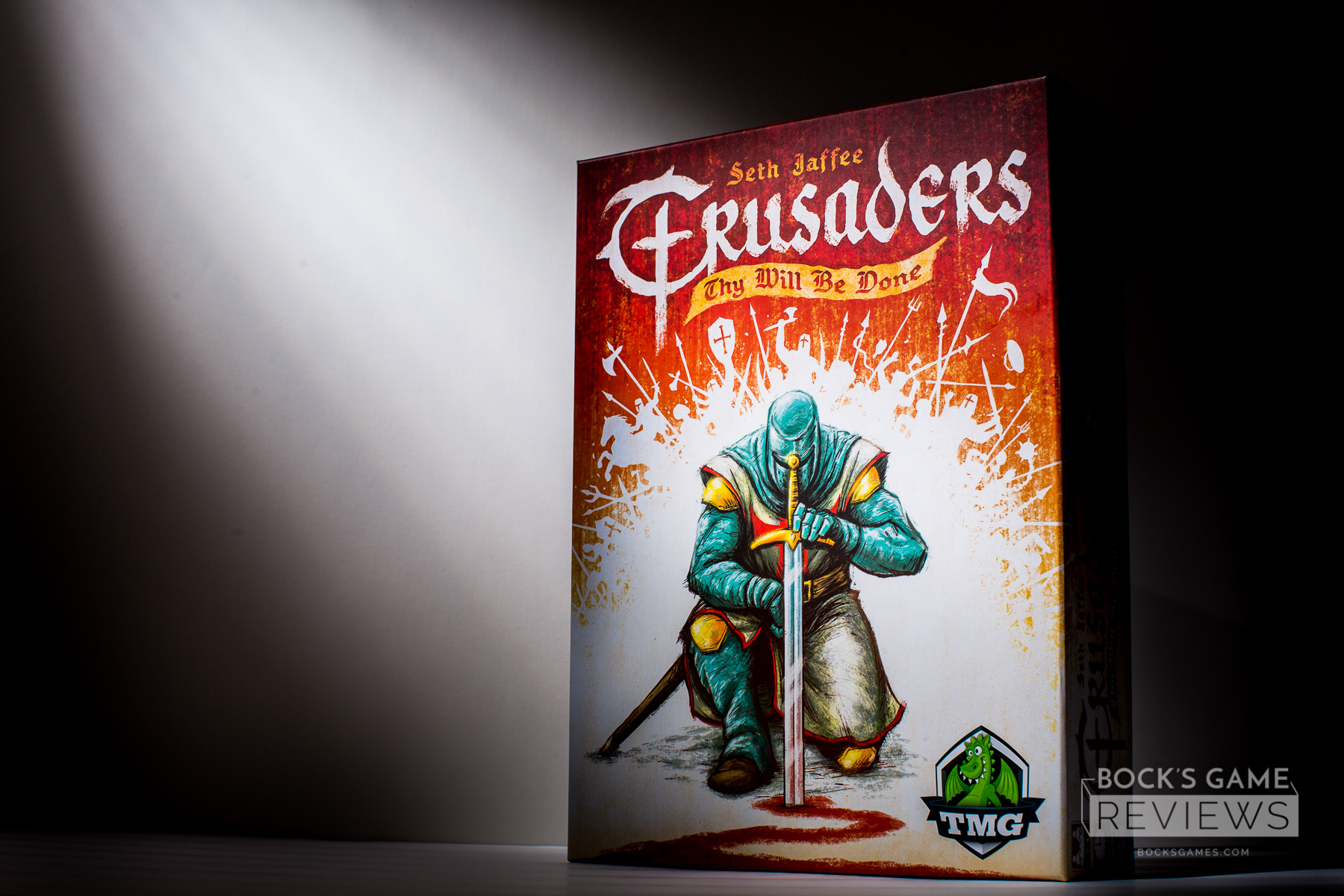
Review of Crusaders: Thy Will Be Done
Designer: Seth Jaffee
Publisher: Tasty Minstrel Games
Year: 2018
REVIEW BY CATHY BOCK. A game based on the Crusades and the Knights Templar? Heavy swords, knight’s armor, and cross-emblazoned shields? Where do I sign up?!
I only had to hear the name of this game and already I wanted to play it. Although the theme of crusading through the Holy Land is problematic, so much fiction and lore
Well…

So let’s get this out in the open. Crusaders: Thy Will Be Done does not deliver on its theme. Never once while playing it did I feel like a Crusader in the Middle Ages. It’s true that I traveled the land and spread my influence, but the closest thing to a battle in this game—taking the “crusade” action—merely involves comparing two numbers and then taking a token off of the board.
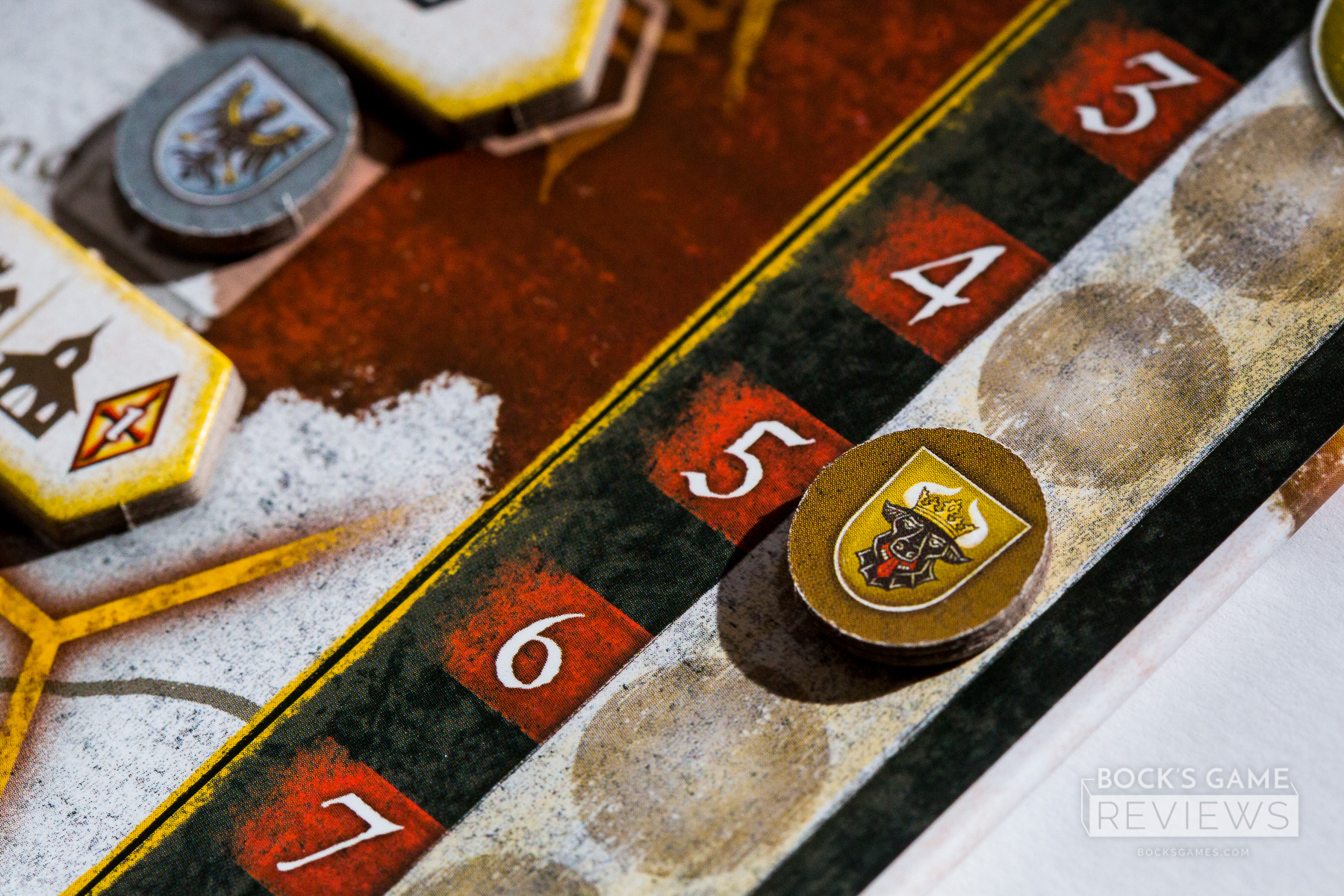
This game is a pure Euro. No randomness, no conflict, and very little player interaction. And the sooner you get to accepting that and throwing away any sort of thematic expectations, the sooner you can enjoy this game for what it is—a very solid and enjoyable Euro.
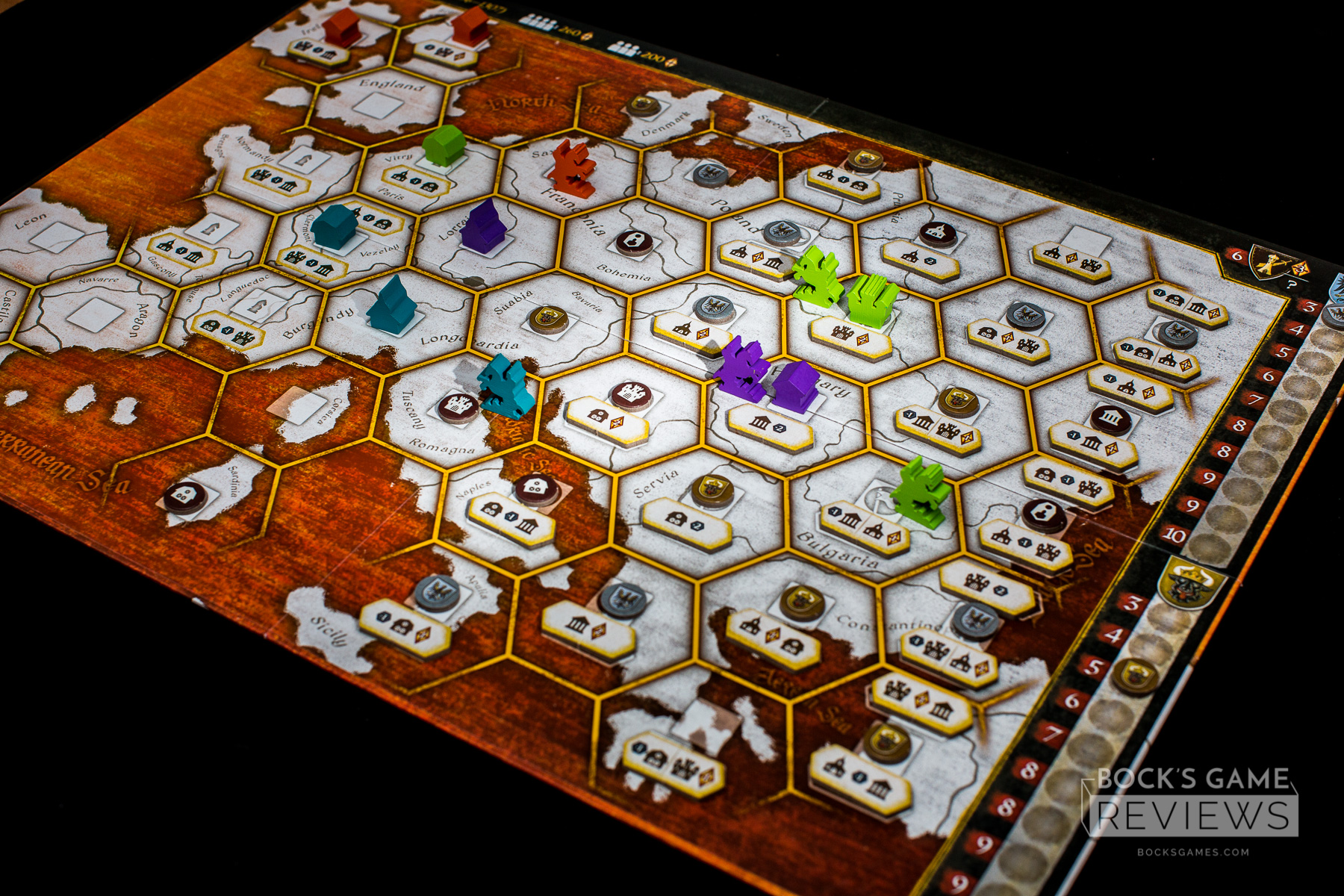
The main board—a hex-covered map of Europe—is the most visually dominant element, but the individual player boards are where this game is really played. On the left side of it: an action rondel populated with 12 tokens to distribute in a mancala fashion. On the right: four rows of buildings to construct out on the main board in order to uncover action upgrades. These two mechanisms—the action rondel and the buildings—are the heart of Crusaders: Thy Will Be Done.
Every good game has its thing—the thing that makes it unique. The hook that makes you want to come back for repeat plays because no other game does that thing.
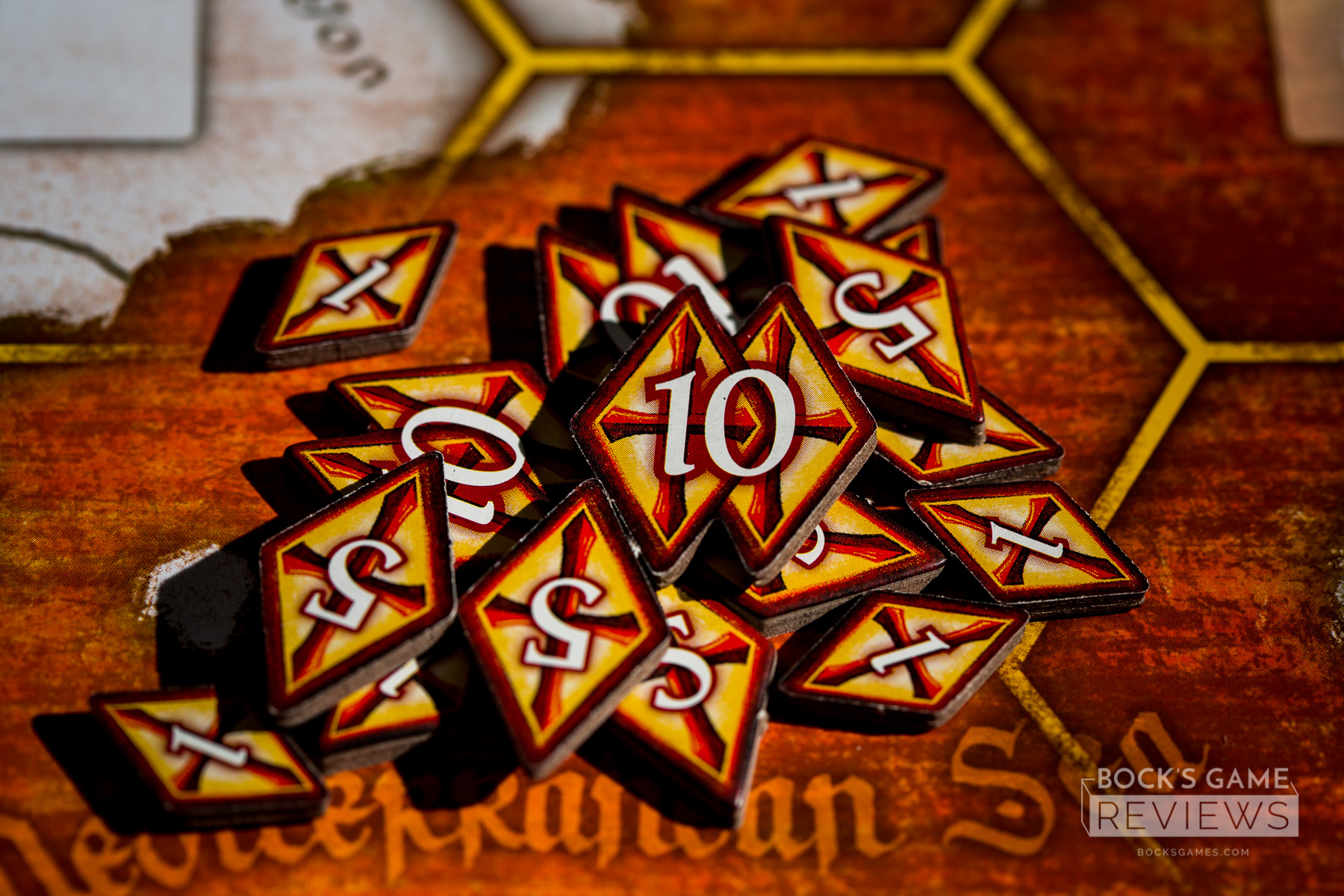
That action rondel with the mancala movement is this game’s thing. It’s certainly not the first to do it (Trajan, Finca, etc.), but Crusaders gives it an important twist. Each wedge on the rondel can be upgraded (flipped) to provide two actions instead of just one. And in a game in which doing more means scoring more, two actions per turn can be essential.
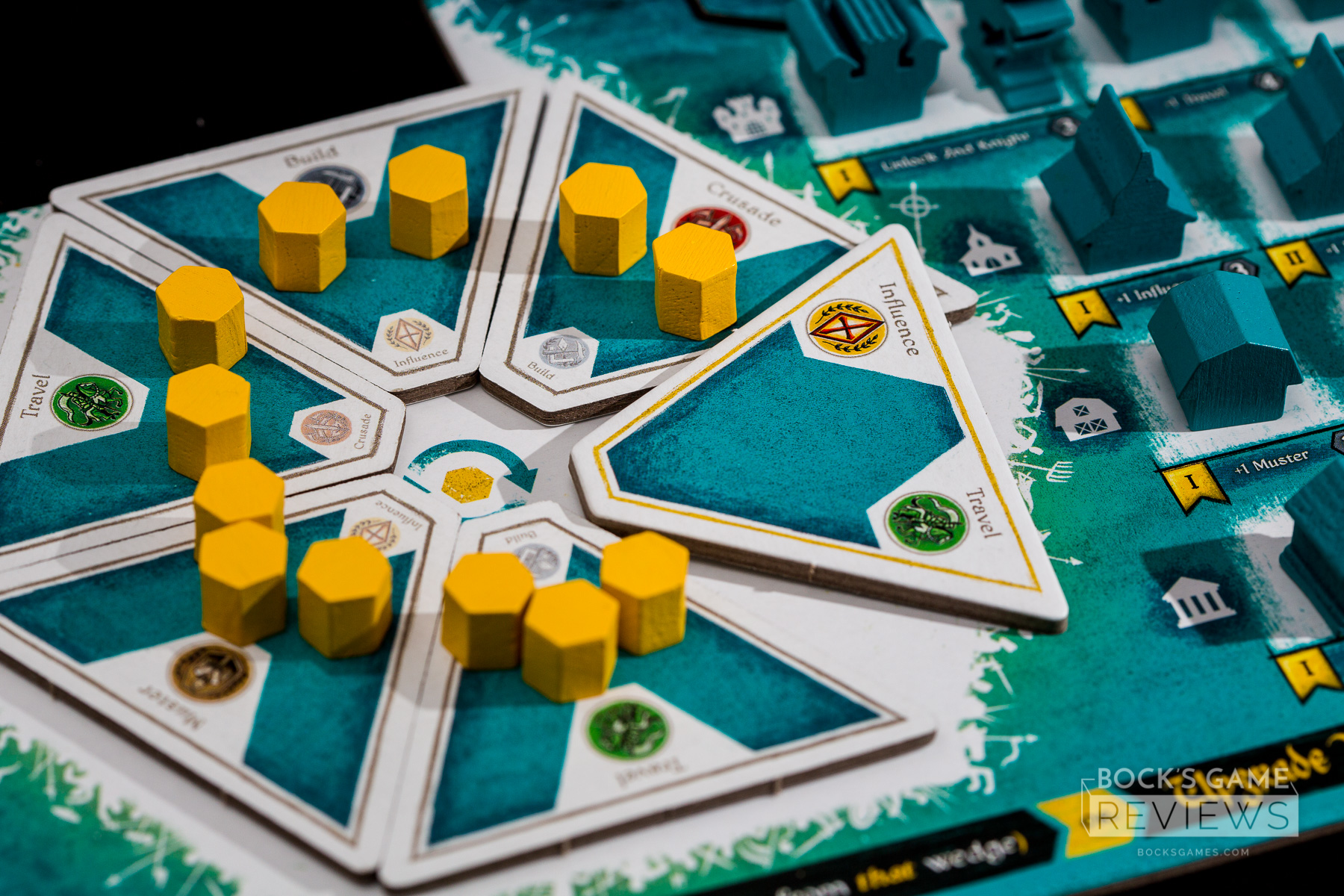
My favorite part of the rondel, though, is the mind-bending planning required to get just the right number of tokens sitting on the right actions at the right time. If you don’t spend time planning ahead, you will waste turns performing actions you don’t need just to be able to move tokens onto the action you really wanted to do.
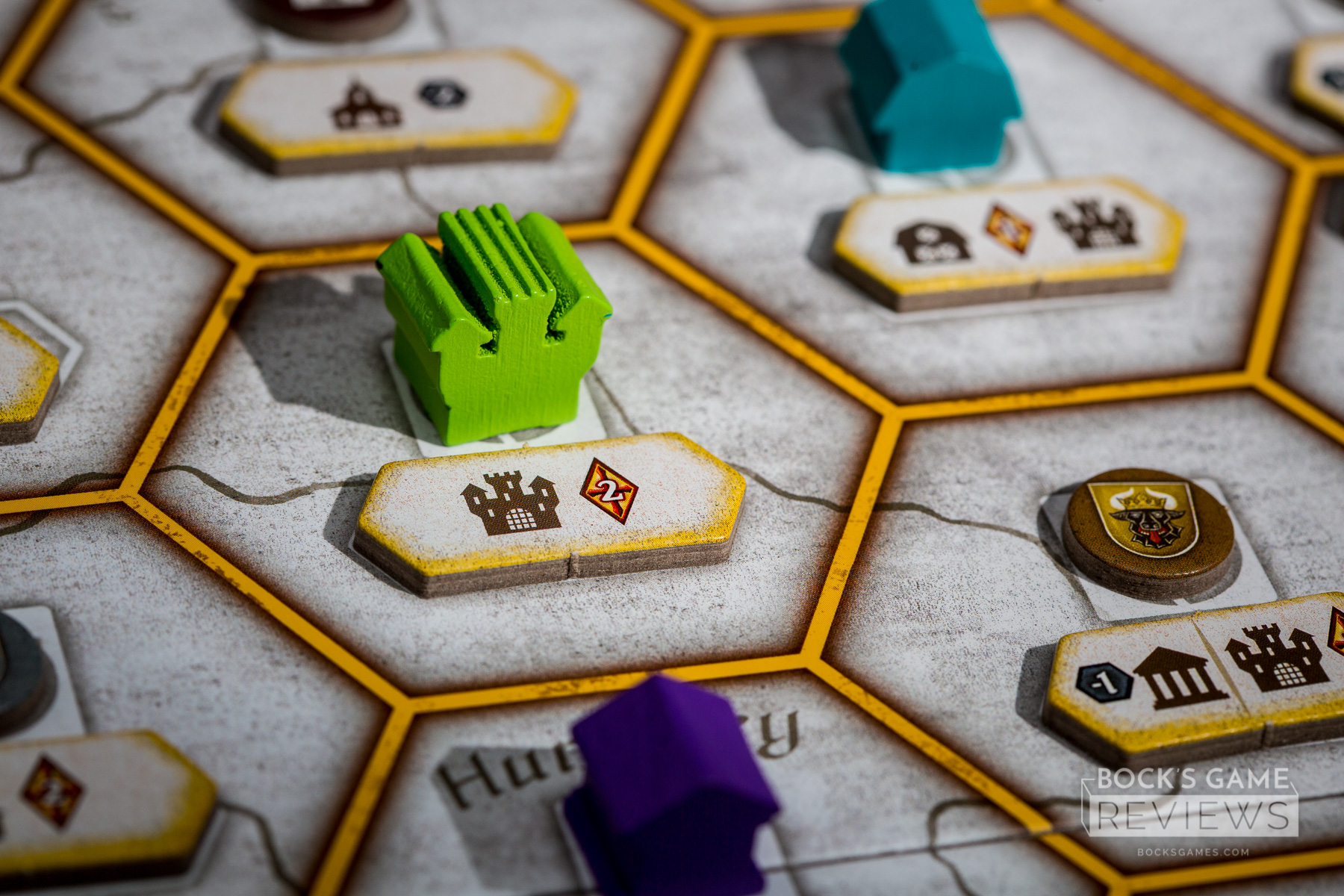
The buildings in this game, while not a unique mechanism by any means, work really well. The purpose of constructing a building isn’t to put it on the map (they become meaningless once built) but rather to uncover an upgrade that makes one of your actions permanently more powerful. Choosing the right buildings early on is crucial, because as the game goes on, actions become more expensive. And trust me—you are really, really going to regret not having those upgrades when you have to burn turns trying to collect enough tokens on your actions.

The enemy tokens out on the map, which you collect when crusading (and for which you’ll also gain points for majorities at the end), were the absolute least interesting part of this game for me. Perhaps it’s because of the thematic dissonance I mentioned earlier. This just doesn’t feel like crusading. It’s passive. You know the strength number of the enemy before crusading, so you just have to make sure the power of your crusade action meets that number. You are never at risk of being defeated. It’s boring accounting instead of conveying the tension and uncertainty of war.
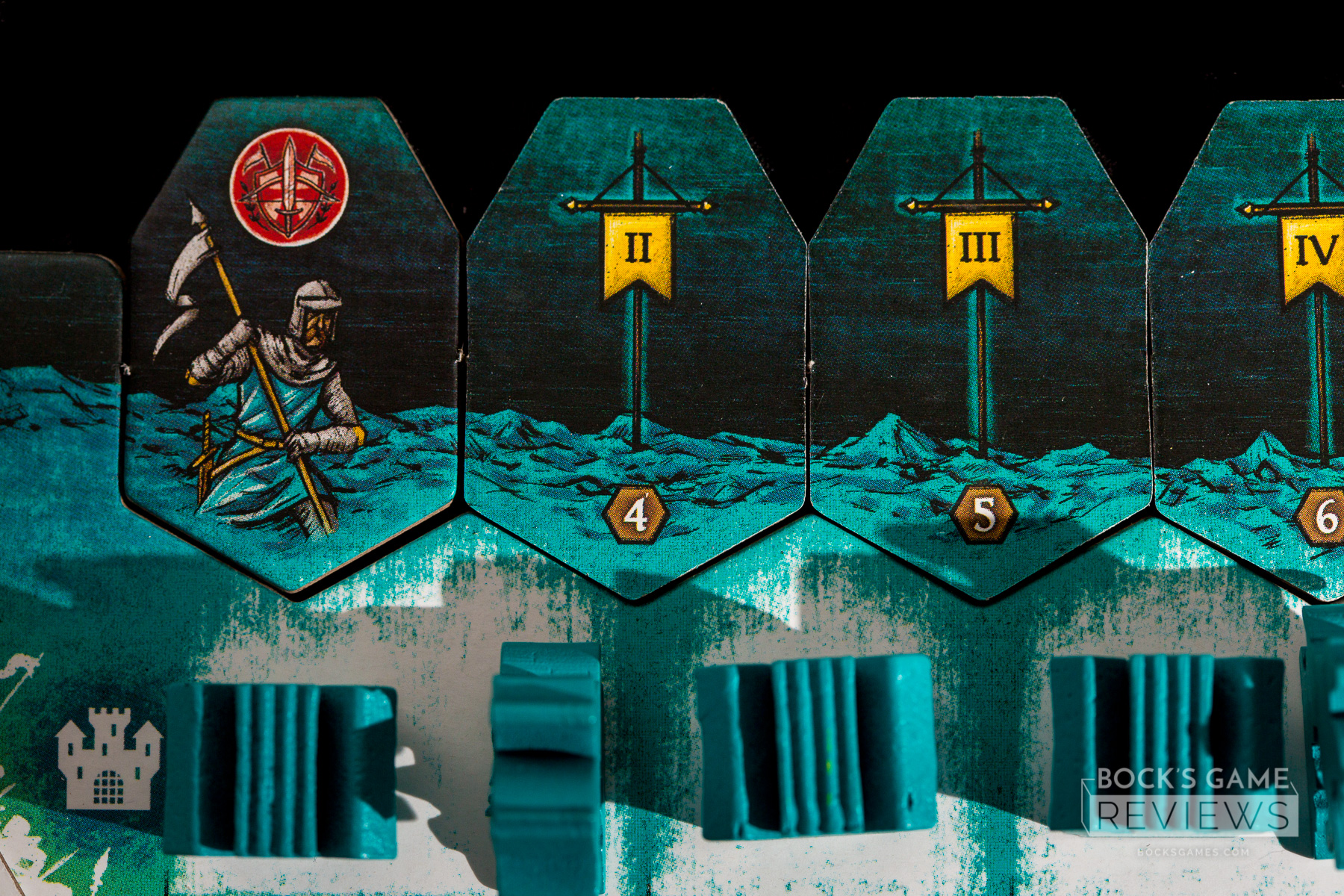
The last thing I’m going to mention is that this game does provide a bit of asymmetry. Each player is assigned a knight order tile with a special ability or effect. Some of these are simple—granting you additional tokens on your rondel or allowing you to upgrade some of your actions before the game begins—and some of them are more advanced and difficult to play with. This gives the game some additional variability and also allows for some slight handicapping when playing with less experienced players.
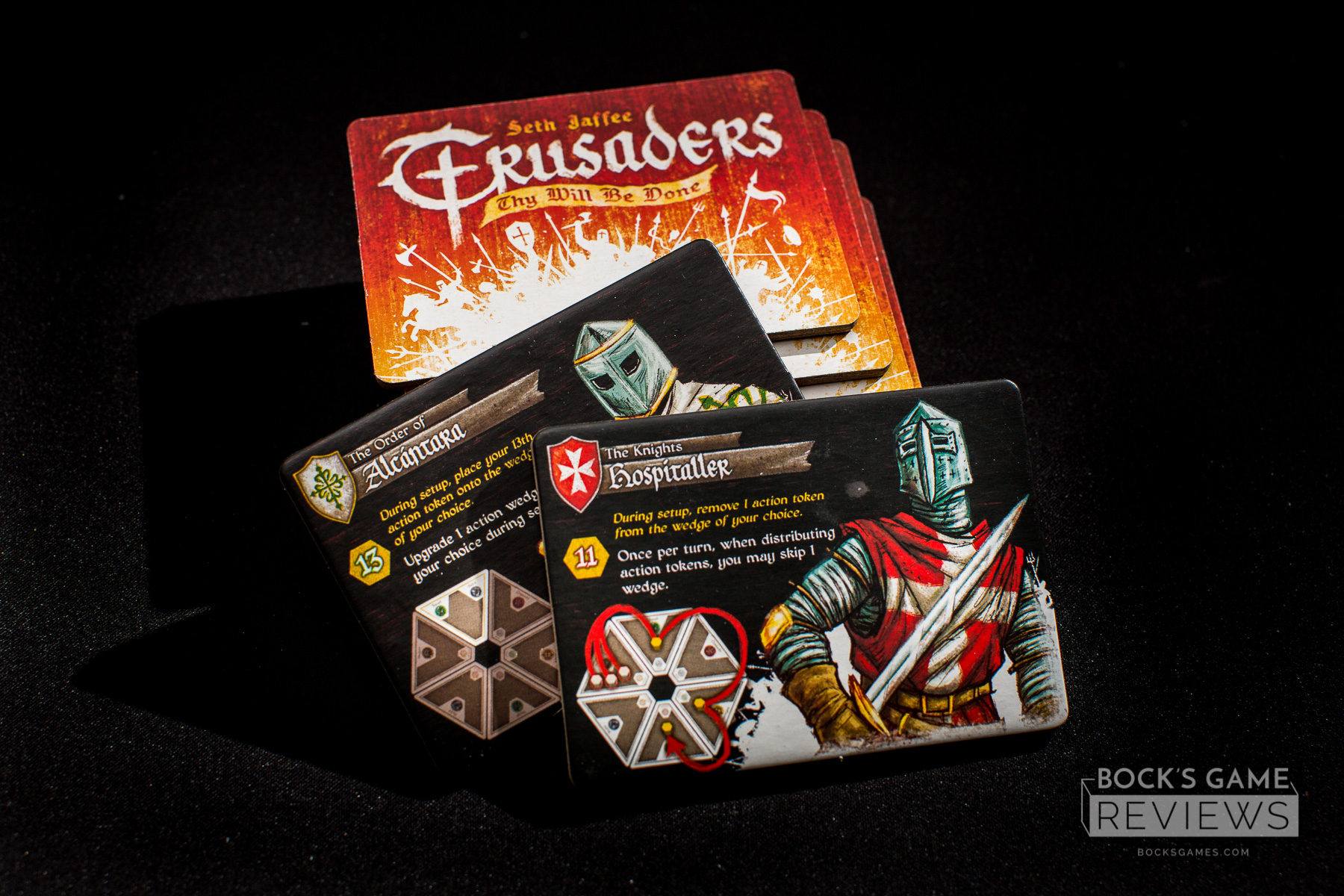
This is a game I will absolutely play again because of that rondel. It’s interesting and thought-provoking but also simple. This is an easy one to teach and play. It isn’t overly complicated and doesn’t take too long. It’s also one of those games that I know I’ll be able to just pick up and start playing, even if I haven’t played for a year. The rules are streamlined and elegant, and the few flaws I found are not enough to keep me from this game. If you’re looking for a solid middleweight game, I highly recommend giving Crusaders: Thy Will Be Done a try.
